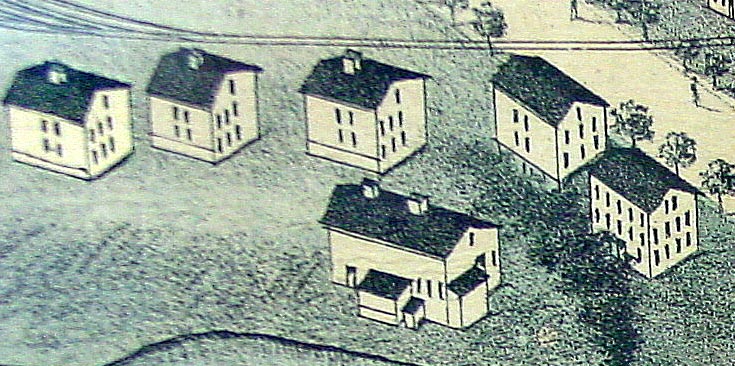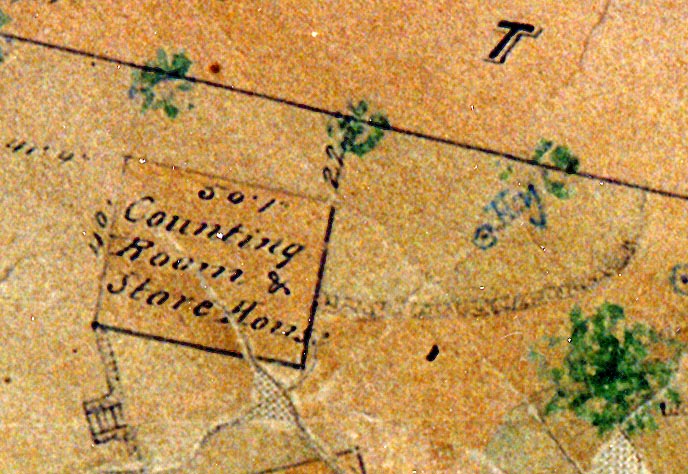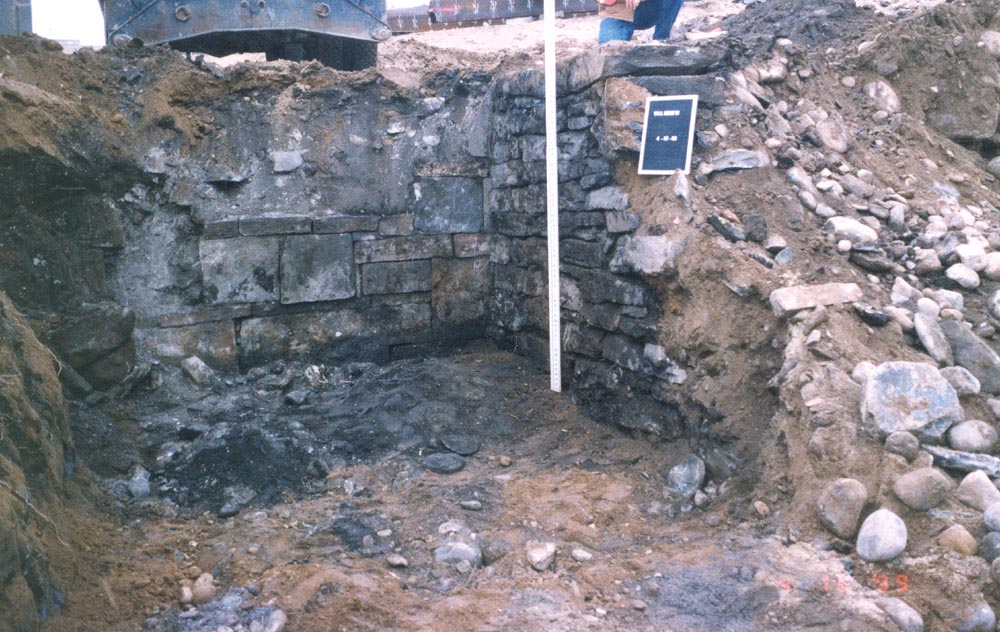Worker Houses

The row of small stone buildings that formerly stood on the south side of Main Street was built to house workers employed by the Jillson Cotton Mill. Each house accommodated four families. Four of the houses were built around 1825, with the one furthest east built somewhat later, around 1855. Textile mills had to provide houses for their workers because when the first mills were built, places like Willimantic were just beginning to develop. Mills typically also provided a company store, in some cases compelling their workers to buy their provisions there. The large building seen in this view was probably a barn. Mills needed barns for the draft horses that hauled materials from one place to another. Some mills also kept cows so that they could sell dairy products to their employees.
Later, these houses were used by the mill for storage. In the 1850s, the thread company built dozens of new employee houses and so had less need for this row. Also, the older stone houses were located close to the railroad freight yard, and so were well-placed for use as storage buildings.
The archaeologists excavated carefully placed exploratory trenches to see if anything remained of the ca. 1855 millworker house that was where the north abutment for the bridge would be constructed. A portion of the foundation and east wall of the house was found, along with a retaining wall that created a level terrace on Main Street higher than the back yards of the houses. The retaining wall was built of rubble masonry, but the house itself was constructed with the more refined ashlar stonework seen in the Jillson House. This type of stonework used thin slabs of finely split and cut stone to create the appearance of large blocks on the exterior; narrower courses of stone laid on their sides tied the surface layer into an underlying layer of stone, usually of coarser construction. 
The map on the left, from 1866, shows the eastmost house in use as a "Counting Room & Store House." The retaining wall can also be seen.
Below is a photograph of the remains of the house and retaining wall as found during the archaeological investigation.

For more information about the textile industry and textile workers in Willimantic, visit the Mill Museum at 411 Main Street.

